
Ae1 Ae3 Antibody Antibodies Bafilomycin A1 Biology Cells Canine Albumin cDNA Clia Kits Culture Cells Devices DNA DNA Templates DNA Testing Enzymes Equipments Isotypes Mip 1B Mmp Activity Assay Mothers Against Decapentaplegic Mouse Albumin Elisa Particles PCR Pcr Kits Peptides Phospho 4Ebp1 Primary Antibodies Reagents Ria Kits Secreted Alkaline Phosphatase Tgf Alpha Antibody Tgf Alpha Elisa Trypsin Activity Assay Tubastatin A Valproic Acid Sodium Salt Vector & Virus Zebrafish Antibodies
A novel multiplex qPCR method for assessing the comparative lengths of telomeres
Background: The comparative size of telomeres is taken into account to be associated to illnesses similar to most cancers, growing old, and cardiovascular illnesses. qPCR is at the moment one of many fundamental strategies for detecting telomere size. Nevertheless, because of the distinctive sequence of telomeres (extremely repetitive six-base sequence), it’s troublesome to design primers and probes to broaden and detect telomere and to place inside reference gene and telomere into the identical tube for detection to scale back the doable inter-pore errors and enhance amplification effectivity. Apart from, the steadiness and accuracy of the take a look at outcomes are enormously affected by the distinction between reference genes and telomere copy quantity.
Strategies: On this research, the single-copy genes have been changed with high-copy genes (300 copies) as the inner management to scale back the copy quantity distinction of the inner genes and telomere. As well as, a multiplex qPCR system was constructed to detect the telomeres and an inside reference gene product. We additionally detected the lengths of telomeres within the genomic DNA in immortalized cells (293T and Hela) from totally different generations of cells.
Outcomes: We detected the comparative telomere lengths of 1500 random Chinese language volunteers of various ages with the multiplex qPCR technique; the consequence reveals that the comparative size of telomeres is negatively associated to age. As well as, we in contrast our qPCR detection technique with a terminal restriction fragmentation (TRF) technique. Each of them have been extremely constant, indicating that the qPCR technique was dependable.
Conclusions: In conclusion, we developed a secure, handy, and correct comparative telomere size detection technique.
Detection of SARS-CoV-2 RNA utilizing RT-qPCR in nasopharyngeal swab, saliva, lingual, and buccal mucosal swab
Coronavirus illness 2019 is recognized primarily based on the detection of extreme acute respiratory syndrome coronavirus 2 (SARS-CoV-2) RNA in nasopharyngeal swabs or saliva utilizing real-time quantitative polymerase chain response. Nasopharyngeal swabs ought to be collected by medical professionals sporting full private protecting gear (PPE), whereas saliva may be collected by sufferers themselves with out PPE. Nevertheless, gathering saliva is troublesome for individuals unable to observe directions, together with infants or unconscious sufferers. Owing to excessive viscosity, particular consideration is required for dealing with saliva samples in laboratories.
To resolve these issues, we in contrast lingual and buccal mucosal swabs (oral swabs) with nasopharyngeal swabs and saliva. Amongst 13 sufferers who had SARS-CoV-2 positivity of their nasopharyngeal swabs, eight and 10 had SARS-CoV-2 positivity in saliva (concordance charge 61.5%) and oral swabs (76.9%), respectively. Amongst eight sufferers with SARS-CoV-2 positivity in saliva, SARS-CoV-2 was additionally detected in oral swabs in 7 sufferers (87.5%).
We couldn’t acquire saliva samples from Four sufferers, however we discovered excellent concordance of SARS-CoV-2 positivity between nasopharyngeal and oral swabs. Subsequently, oral swabs can be utilized for the detection of SARS-CoV-2 RNA.
Quantification of Viable Brochothrix thermosphacta in Chilly-Smoked Salmon Utilizing PMA/PMAxx-qPCR
The purpose of this research was to develop a fast and correct PMA-qPCR technique to quantify viable Brochothrix thermosphacta in cold-smoked salmon. B. thermosphacta is without doubt one of the fundamental meals spoilage micro organism. Amongst seafood merchandise, cold-smoked salmon is especially impacted by B. thermosphacta spoilage. Particular and delicate instruments that detect and quantify this bacterium in meals merchandise are very helpful. The tradition technique generally used to quantify B. thermosphacta is time-consuming and might underestimate cells in a viable however not instantly culturable state. We designed a brand new PCR primer set from the single-copy rpoC gene.
QPCR effectivity and specificity have been in contrast with two different printed primer units concentrating on the rpoC and rpoB genes. The viability dyes PMA or PMAxx have been mixed with qPCR and in contrast with these primer units on viable and useless B. thermosphacta cells in BHI broth and smoked salmon tissue homogenate (SSTH). The three primer units displayed related specificity and effectivity.
The effectivity of latest designed rpoC qPCR on viable B. thermosphacta cells in SSTH was 103.50%, with a linear willpower coefficient (r2) of 0.998 and a restrict of detection of 4.04 log CFU/g. Utilizing the three primer units on viable cells, no important distinction was noticed between cells handled or untreated with PMA or PMAxx. When useless cells have been used, each viability dyes suppressed DNA amplification. However, our outcomes didn’t spotlight any distinction between PMAxx and PMA of their effectivity to discriminate viable from unviable B. thermosphacta cells in cold-smoked salmon. Thus, this research presents a fast, particular and environment friendly rpoC-PMA-qPCR technique validated in cold-smoked salmon to quantify viable B. thermosphacta in meals.
Transcriptional Evaluation of Tightly Synchronized Plasmodium falciparum Intraerythrocytic Levels by RT-qPCR
In Plasmodium falciparum, the parasite answerable for probably the most extreme types of human malaria, many elementary processes are managed on the transcriptional stage. Research on numerous points of fundamental parasite biology in addition to molecular epidemiology research usually depend on the power to precisely measure transcript ranges, however that is difficult by the cyclic expression patterns of nearly all of malaria parasite genes. Right here, we offer an entire workflow to measure transcript ranges in P. falciparum intraerythrocytic blood levels, overcoming the confounding components which can be generally encountered. The tactic described covers all of the steps from synchronization of parasite cultures to reverse transcriptase quantitative PCR (RT-qPCR) evaluation.

Comparability of heat-inactivated and infectious SARS-CoV-2 throughout indoor floor supplies reveals comparable RT-qPCR viral sign depth and persistence
Environmental monitoring in public areas can be utilized to establish surfaces contaminated by individuals with COVID-19 and inform acceptable an infection mitigation responses. Analysis teams have reported detection of Extreme Acute Respiratory Syndrome Coronavirus 2 (SARS-CoV-2) on surfaces days or perhaps weeks after the virus has been deposited, making it troublesome to estimate when an contaminated particular person might have shed virus onto a SARS-CoV-2 optimistic floor, which in flip complicates the method of building efficient quarantine measures. On this research, we decided that reverse transcription-quantitative polymerase chain response (RT-qPCR) detection of viral RNA from heat-inactivated particles experiences minimal decay over seven days of monitoring on eight out of 9 surfaces examined. The properties of the studied surfaces lead to RT-qPCR signatures that may be segregated into two materials classes, tough and clean, the place clean surfaces have a decrease restrict of detection. RT-qPCR sign depth (common quantification cycle ( Cq )) may be correlated to floor viral load utilizing just one linear regression mannequin per materials class. The identical experiment was carried out with infectious viral particles on one floor from every class, with basically an identical outcomes.
The steadiness of RT-qPCR viral sign demonstrates the necessity to clear monitored surfaces after sampling to determine temporal decision. Moreover, these findings can be utilized to reduce the variety of supplies and time factors examined and permit for the usage of heat-inactivated viral particles when optimizing environmental monitoring strategies.
Significance: Environmental monitoring is a crucial instrument for public well being surveillance, significantly in settings with low charges of diagnostic testing. Time between sampling public environments, similar to hospitals or faculties, and notifying stakeholders of the outcomes ought to be minimal, permitting choices to be made in the direction of containing outbreaks of coronavirus illness 2019 (COVID-19).
The Safer At Faculty Early Alert program (SASEA) [1], a large-scale environmental monitoring effort in elementary college and little one care settings, has processed > 13,000 floor samples for SARS-CoV-2, detecting viral alerts from 574 samples. Nevertheless, consecutive detection occasions necessitated the current research to determine acceptable response practices round persistent viral alerts on classroom surfaces.
Different analysis teams and medical labs creating environmental monitoring strategies may have to determine their very own correlation between RT – qPCR outcomes and viral load, however this work gives proof justifying simplified experimental designs, like lowered testing supplies and the usage of heat-inactivated viral particles.
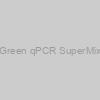 Green qPCR SuperMix | |||
| abx098031-200l | Abbexa | 200 µl | EUR 912.5 |
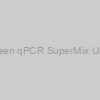 Green qPCR SuperMix UDG | |||
| 20-abx098032 | Abbexa |
|
|
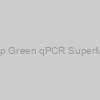 Top Green qPCR SuperMix | |||
| 20-abx098033 | Abbexa |
|
|
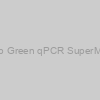 Tip Green qPCR SuperMix | |||
| 20-abx098034 | Abbexa |
|
|
 Green qPCR SuperMix UDG | |||
| abx098032-100l | Abbexa | 100 µl | EUR 687.5 |
 Green qPCR SuperMix UDG | |||
| abx098032-200l | Abbexa | 200 µl | EUR 912.5 |
 Top Green qPCR SuperMix | |||
| abx098033-100l | Abbexa | 100 µl | EUR 262.5 |
 Top Green qPCR SuperMix | |||
| abx098033-200l | Abbexa | 200 µl | EUR 487.5 |
 Tip Green qPCR SuperMix | |||
| abx098034-100l | Abbexa | 100 µl | EUR 262.5 |
 Tip Green qPCR SuperMix | |||
| abx098034-200l | Abbexa | 200 µl | EUR 437.5 |
) Top Green qPCR SuperMix (+Dye II) | |||
| 20-abx098890 | Abbexa |
|
|
) Tip Green qPCR SuperMix (+Dye II) | |||
| 20-abx098891 | Abbexa |
|
|
) Top Green qPCR SuperMix (+Dye II) | |||
| abx098890-100l | Abbexa | 100 µl | EUR 262.5 |
) Top Green qPCR SuperMix (+Dye II) | |||
| abx098890-200l | Abbexa | 200 µl | EUR 487.5 |
) Tip Green qPCR SuperMix (+Dye II) | |||
| abx098891-100l | Abbexa | 100 µl | EUR 262.5 |
) Tip Green qPCR SuperMix (+Dye II) | |||
| abx098891-200l | Abbexa | 200 µl | EUR 437.5 |
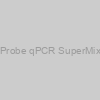 Probe qPCR SuperMix | |||
| 20-abx098040 | Abbexa |
|
|
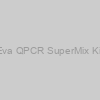 Eva QPCR SuperMix Kit | |||
| K5052200 | Biochain | 200 reactions | EUR 211 |
 Eva QPCR SuperMix Kit | |||
| K5052400 | Biochain | 400 reactions | EUR 354 |
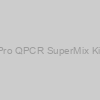 Pro QPCR SuperMix Kit | |||
| K5053200 | Biochain | 200 reactions | EUR 180 |
 Pro QPCR SuperMix Kit | |||
| K5053400 | Biochain | 400 reactions | EUR 326 |
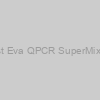 Fast Eva QPCR SuperMix Kit | |||
| K5052002 | Biochain | 200 rxn | EUR 211 |
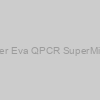 Power Eva QPCR SuperMix Kit | |||
| K5057200 | Biochain | 200 reactions | EUR 180 |
 Power Eva QPCR SuperMix Kit | |||
| K5057400 | Biochain | 400 reactions | EUR 354 |
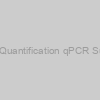 Library Quantification qPCR SuperMix | |||
| 20-abx098896 | Abbexa |
|
|
 Library Quantification qPCR SuperMix | |||
| abx098896-100l | Abbexa | 100 µl | EUR 700 |
 Library Quantification qPCR SuperMix | |||
| abx098896-200l | Abbexa | 200 µl | EUR 962.5 |
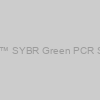 EnTurbo™ SYBR Green PCR SuperMix | |||
| EQ001-25mL | ELK Biotech | 25mL | EUR 340 |
 EnTurbo™ SYBR Green PCR SuperMix | |||
| EQ001-5mL | ELK Biotech | 5mL | EUR 80 |
 EnTurbo™ SYBR Green PCR SuperMix | |||
| EQ001 | ELK Biotech | 5mL | EUR 340 |
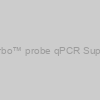 EnTurbo™ probe qPCR SuperMix | |||
| EQ017-25mL | ELK Biotech | 25mL | EUR 240 |
 EnTurbo™ probe qPCR SuperMix | |||
| EQ017-5mL | ELK Biotech | 5mL | EUR 78 |
 EnTurbo™ probe qPCR SuperMix | |||
| EQ017 | ELK Biotech | 5mL | EUR 240 |
 Green Two-Step qRT-PCR SuperMix | |||
| abx098035-50rxns20ulRTSystems300rxns20ulqPCRSystems | Abbexa | 50 rxns × 20 ul (RTSystems) / 300 rxns × 20 ul (qPCRSystems) | EUR 777.6 |
 Green One-Step qRT-PCR SuperMix | |||
| 20-abx09803820ulSystems | Abbexa |
|
|
 Green Two-Step qRT-PCR SuperMix | |||
| abx098035-100l | Abbexa | 100 µl | EUR 925 |
Tags: culture cells meaning culture cellulaire culture cellulaire 3d culture cellulaire def culture cellulaire pdf culture cellulaire primaire culture cellulaire protocole culture cellulaire psm cultured cells cultured cells definition cultured cells derived from animals cultured cells meaning cultured cells of mammalian origin qpcr analysis qpcr assay qpcr cv qpcr data qpcr data analysis qpcr data analysis excel qpcr db qpcr definition qpcr machine qpcr mechanism qpcr primer qpcr primer design qpcr protocol qpcr reference qpcr standard qpcr standard curve qpcr standard curve efficiency qpcr tk qpcr troubleshooting qpcr vs pcr qpcr vs rt-pcr qpcr workflow qpcr youtube qpcrd


